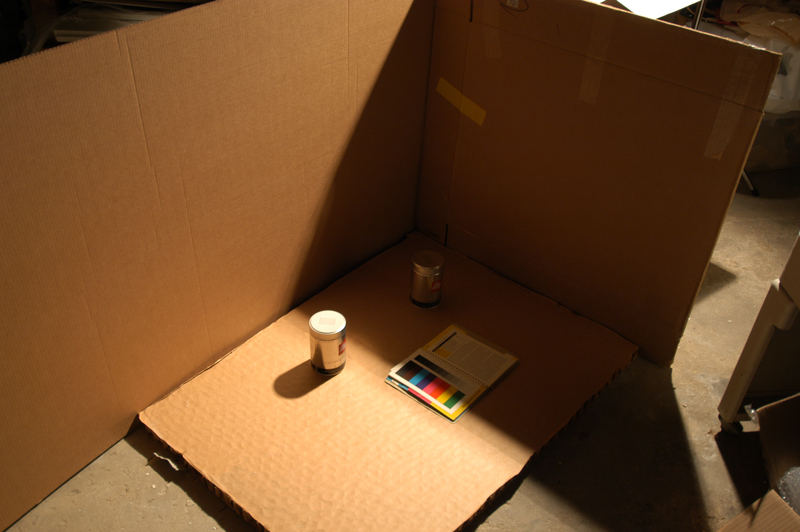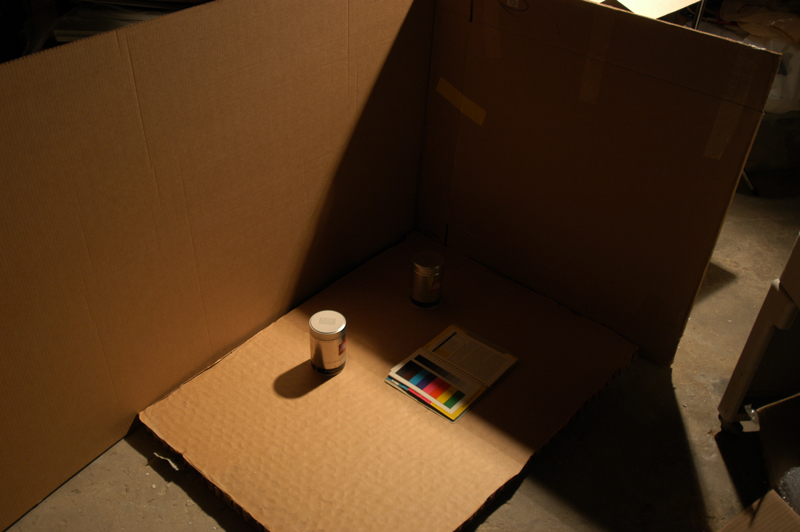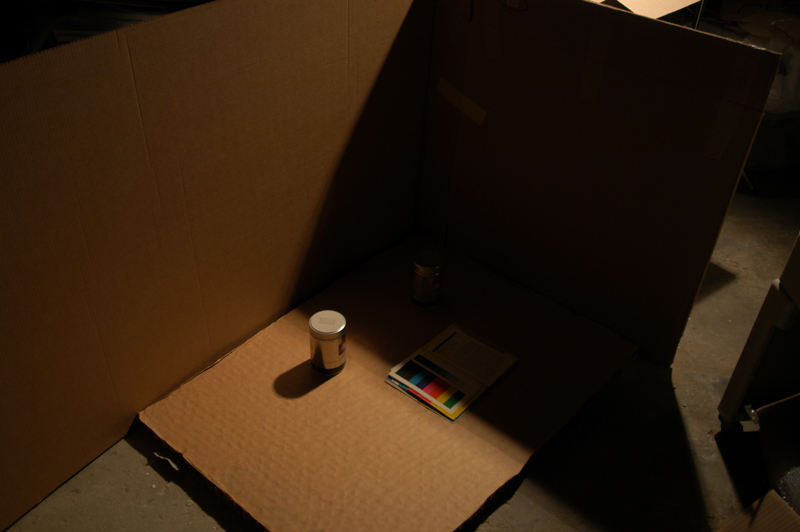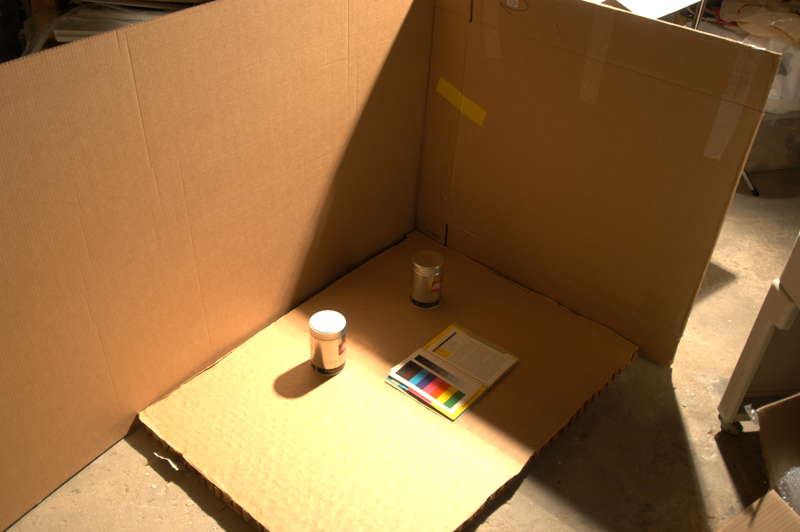
 |
(Note: a footnote was added to this article on 29 September 2006.)
Harrison Eiteljorg, IIThe human eye can take in a scene with extremely bright and extremely dark portions and make out detail in both the bright and the dark areas at the same time. Unfortunately, photography cannot create a comparable image, one that shows clearly both objects in bright light and objects in dark shadows. Digital photography is slightly less capable in this area, failing to reproduce what the eye sees by a wider margin.
A new photographic technique that is meant to compensate for this lack of what is called dynamic range (the ratio of the lightest to darkest part of an image -- a ratio rarely seen in photographic literature but always advertised for high-quality film scanners). This technique is called high dynamic range photography or H.D.R. In short, the technique involves the use of multiple exposures of the same scene so that everything in the scene has been properly exposed in one or another of the images -- and then combining the images to produce one image with all the detail and dynamic range required by the scene.
W. Fred Limp, Director of the Center for Advanced Spatial Technologies at the University of Arkansas, alerted me to this new technique and directed me to an article in the NY Times (Ian Austen, "Basics; Was It Done With A Lens, or a Brush?" August 3, 2006). It seemed to me that the typical excavation trench photo represented an ideal candidate for this technique since the contrast between the shadows and the brightly-lighted portions of a trench often overwhelm film or digital media. Accordingly, I undertook the experiment that is detailed here.
1. The set-up: cardboard sheets creating an interior corner and the floor of an area. Artificial lighting at an angle that cast strong, direct light on the floor but left the deepest part of the interior corner in nearly complete darkness. No other lights were used, and the work was carried out in my basement where daylight does not penetrate.
An aluminum coffee can was placed complete in the shade and another completely in the light. In addition, a photo color calibration card was placed in the area, with half of the color bars in the light and half in the shade.
2. The procedure: five photographs were taken, each with double the exposure time of its predecessor. The photographs were taken with a tripod so that the photos would match, and the zoom lens was set at 24 mm. (on a digital Nikon D-100 camera, thus roughly matching the coverage of a 35 mm. lens on a 35 mm. camera). The photos were all saved in JPEG format.1
3. The five images were automatically combined by PhotoShop
4. The middle exposure was also manipulated within PhotoShop, using only the Shadow/Highlight adjustment, to provide a comparison.
5. Various JPEG images were created to illustrate the results.
The starting images, from lightest to darkest:





The HDR image made from all five exposures:

The middle exposure, as adjusted in PhotoShop:

Looking just at these images, the advantage of the H.D.R. version seems to be nil, though it may be somewhat better in the darkest areas. In fact, the print on the lid of the coffee can in the light is far better in the ordinary image, and the shadows seem more natural by virtue of being a bit darker. (It is natural that I should prefer the darker shadows; after all, I selected the adjustments in PhotoShop that yielded this result.) In addition, the texture of the cardboard "floor" in the lighted area seems better delineated. I tried to adjust the H.D.R. image to bring out the texture of the cardboard and the print, but I could not achieve a better result than that basic H.D.R. image.
However, examining in more detail by comparing the highest-resolution versions of the images shows that the adjusted simple image has a grainy appearance in the shadows due to the underexposure; some detail is consequently lost. The H.D.R. version is clearly better there. Nevertheless, I prefer the simple image because of the better modulation of light in the bright areas. (Starting with the image that was overexposed by doubling the exposure time, it was possible to create an image that had less grain in the shadows but also a bit less definition on the lid of the coffee can.)
It should be noted that the distinctions between and among images depend on the monitor in use as well as the underlying images. As a result, each user may see something slightly different from each other user.
A portion of the H.D.R. image at full resolution:

A portion of the PhotoShop-adjusted middle-exposure image at full resolution:

This experiment has not persuaded me that H.D.R. photography is useful for archaeological trench photos, despite my optimistic expectations. Given the added difficulty of doing H.D.R. photos -- using a tripod, taking multiple photos, and combining images with software -- this does not seem to be a technique that produces enough benefits to be of interest. Indeed, it reminds me that the best way to take good trench photos is to use a piece of white cardboard or something similar to reflect light into dark shadows. The results will be better than any of the images here.
Having made my preference clear, I hasten to add that we are eager to hear from any reader who has had a good experience and can show H.D.R. working well. We would be happy to publish information about a more successful experience.
-- Harrison Eiteljorg, II
To send comments or questions to the author, please see our email contacts page.
1. A second experiment was conducted after Dr. Irwin Scollar emailed a note suggesting that the use of the JPEG image format might have had a negative impact on the results of this experiment. Not only was he correct, it was a procedural error I had recognized and regretted but not had time to correct. Another set of 5 images -- using as nearly the same set-up as possible was taken with the same camera and lens but storing the images in the Nikon NEF -- "raw" image -- format. This format preserves more information and should have been used in the initial experiment. Although the file format preserves more image information, including superior color representation, the results were not better. In the bright areas the H.D.R. image was washed out and lacked detail. The results are not illustrated here since that would require a complete new set of images while adding no real information. My sincere thanks to Mr. Scollar for reminding me of the need to make the added experiment. (Note added 29 September 2006.) Return to text.
For other Newsletter articles concerning the use of electronic media in the humanities consult the Subject index.
Next Article: Electronic Publication at CSA
Table of Contents for the Fall, 2006 issue of the CSA Newsletter (Vol. XIX, no. 2)
 Table of Contents for all CSA Newsletter issues on the Web
Table of Contents for all CSA Newsletter issues on the Web
| CSA Home Page |